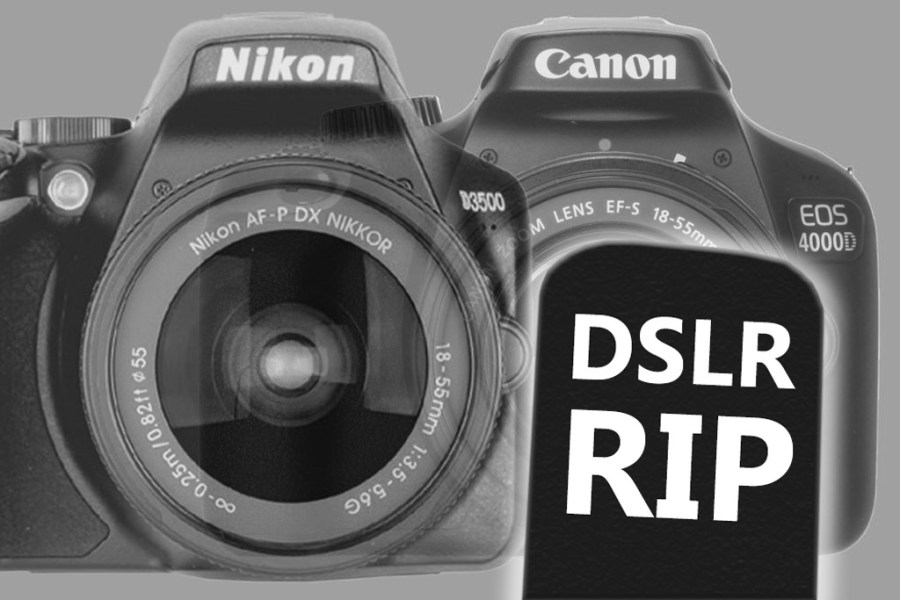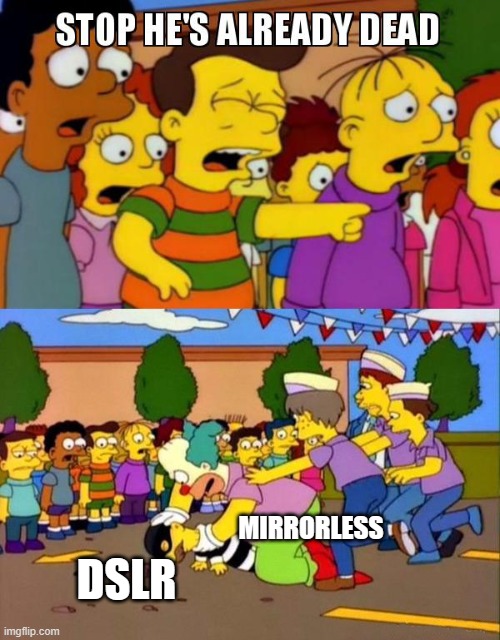Whether we like it or not, the DSLR is dead. Mirrorless cameras have taken their place. Unless you’re a Pentax user, then it’s time to face facts, Nikon, and Canon’s DSLR line-ups are effectively discontinued, as there’s no way they’re going to release new DSLRs. Canon and Nikon DSLR lenses continue to be discontinued, and are becoming harder and harder to buy new, and you can’t even buy Nikon’s entry level DSLR new anymore, the Nikon D3500.
The DSLR is dead, long live the MIRRORLESS camera
It’s time we stop buying DSLRs, and instead move on to mirrorless cameras. Mirrorless cameras are the new DSLR, except they’re smaller, faster, and generally all-round better, in almost every way, apart from battery life, but who cares, just buy an extra battery or two and bring a USB power bank with you if needed.
The Nikon Z8 is another nail in the coffin for the DSLR
And the coffin already has enough nails in it! Nikon’s new high-end Nikon Z8 offers almost all of the features found in the Nikon Z9, but at a lower price point. It has features such as 8K video, and 120fps continuous shooting, that DSLRs could only dream of, if they were sentient beings capable of dreaming, of course.
Mirrorless camera systems available give us far more choice than DSLRs
There are a wide range of manufacturers making mirrorless cameras, including Canon, Sony, Nikon, Fujifilm, Panasonic, Olympus/OM System, Leica, Sigma, and more, including video cameras from Blackmagic Design, and others.
Plus, we’ve got mature lens systems from Micro Four Thirds, Sony, Fujifilm and growing lens systems from Canon and Nikon. The L-Mount system gives a wide range of lenses from Leica, Sigma, and Panasonic, and more from third parties.
All are welcome
The fact that mirrorless lens mounts (excluding Canon), have generally been far more welcoming to third parties, means there’s a vast array of third-party options, and creative lenses, that we would have only dreamed of on DSLRs.
The way mirrorless cameras work means it’s much easier to mount an old vintage lens and start using it straight away, thanks to the WYSIWYG (what you see is what you get) viewfinder and screen. Doing this with an optical viewfinder is much more difficult, despite what earlier opinions have suggested.

The Canon EOS 90D is large considering it has an APS-C sensor. Image: AP
You first camera? DSLR or mirrorless?
If you’re a beginner looking for a camera, or recommending the first camera to someone, it’s time we started recommending entry-level mirrorless cameras, rather than repeating the same old mantra of ‘get a DSLR!’
- See the best cameras for beginners, plus look at our guide to DSLR vs Mirrorless
Perhaps there hasn’t been enough information about mirrorless cameras, perhaps people still think a camera with a removable lens is a DSLR, whether it’s a mirrorless or a DSLR.
But it’s time we started giving people advice on cameras that not only thinks about now, but the future, and without a shadow of a doubt, mirrorless cameras are the future.
What about DSLRs being cheaper than mirrorless?
Mirrorless cameras have been around since 2008 (Micro Four Thirds), and full-frame mirrorless cameras have been available since 2013 (with the Sony Alpha A7), which means there’s a huge range of cameras and lenses available on the second-hand market, as well as a number of entry level models still available new.
Sure, new mirrorless cameras from Nikon, Canon and others can be very expensive, particularly for professional cameras and lenses, but look at the rest of the market and you can find some real bargains.
The views expressed in this column are not necessarily those of Amateur Photographer magazine or Kelsey Media Limited. If you have an opinion you’d like to share on this topic, or any other photography related subject, email: ap.ed@kelsey.co.uk.
Related reading
- The mirrorless camera combines the best of compacts and DSLRs
- Why Micro Four Thirds offers something no-one else can
- Why are we so obsessed by full frame sensors?
Follow AP on Facebook, Twitter, Instagram, YouTube and TikTok.








